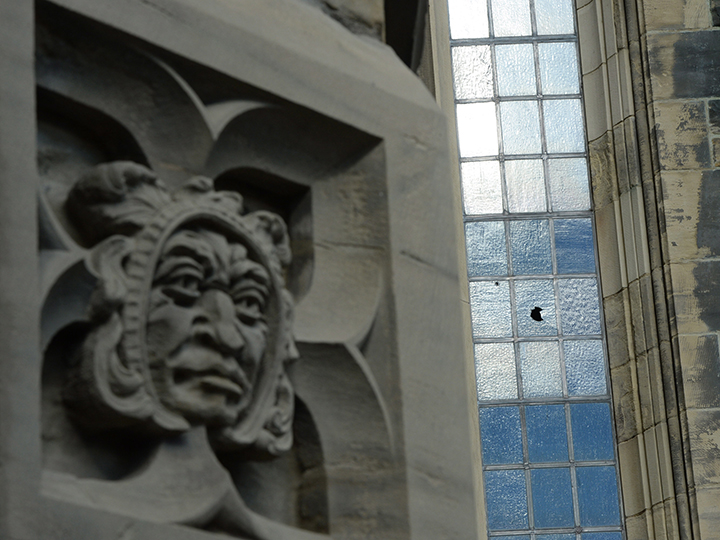WATCH ABOVE: The RCMP admitted the Hill is vulnerable and Prime Minister Stephen Harper will now have 24-hour police protection wherever he goes. Jacques Bourbeau reports.

How did a man with a gun come up to the front door of Parliament’s Centre Block, get inside and down the Hall of Honour before being stopped?
Although the investigation is ongoing, it’s a question that is on the minds of many Parliamentarians, as Parliament Hill’s security measures are being debated.
WATCH: Terrorist attacks in London in 2005 triggered tough new terror laws, including allowing more surveillance. Stuart Greer looks at the British model and what Canada could learn from it.
“If there are holes out there, we have to mend them,” Conservative Member of Parliament Daryl Kramp told Global News.
Police are concerned too. “The security picture on Parliament Hill needs to be evaluated,” said RCMP Commissioner Bob Paulson on Thursday. He expressed concern at how quickly the attacker was able to get from the street to the doors of the Centre Block.
Some plans to improve security are already underway. An $8 million contract was awarded to IBI Group Management Partnership in February 2013, for construction of a new Visitor Welcome Centre. Currently, visitors enter the Centre Block through a door next to the main entrance, where they are screened.
WATCH: Kramp believes all Hill security should carry guns
“You’re being frisked inside the building, directly under the Peace Tower,” said Senator Jim Munson, who believes this should change.

Get breaking National news
According to the tender notice, the new Visitor Welcome Centre will be a mostly subterranean building which connects to the West and Centre Blocks. It will provide security screening and visitor services, as well as shipping and receiving. Excavation work has already begun, and according to the Public Works and Government Services website, construction is supposed to be complete by 2017.
Bollards were installed as part of the ongoing restoration work on the Hill, and the walls at the East and West Gates were restored.
As revealed in a police press conference on Thursday afternoon, security cameras are installed throughout the grounds and the suspect in Wednesday’s shooting was captured on video from several angles as he ran onto the Hill.
Paulson also announced the creation of an “additional rapid response team” of RCMP officers for an undefined period of time.
WATCH: Security expert predicts a “permanent change” in the security of government buildings in the wake of the storming of Parliament by a gunman Wednesday
Divided responsibility
Security on the Hill is complex, with three different agencies responsible for different areas – four agencies, if you count the Ottawa Police’s responsibility for anything which happens outside the Hill’s fence.
The House of Commons Security Service, headed by the Sergeant-at-Arms, is responsible for the central and west sections of Centre Block, as well as other Parliamentary buildings off the Hill, such as the Justice and Confederation Buildings, where many MPs have offices.
The Senate Protective Service is responsible for the east side of Centre Block (where the Senate is) as well as the East Block, where Senate offices are.
The Royal Canadian Mounted Police is responsible for the grounds, including the lawn and small roads leading up to the buildings.
All these divided responsibilities can lead to mix-ups, such as when in 2009, Greenpeace activists scaled the roof of the West Block and unfurled a banner. An investigation determined that it was unclear whether the RCMP or the House of Commons Security Services had jurisdiction over the exterior of the buildings, including the roof.
According to a 2012 Auditor General report, the security partners have agreed that the partner nearest to an incident would respond. They have a “Master Security Plan” designed to coordinate activities among the different agencies, but the report also recommended that they look at combining the different security services into a single agency responsible for the entire Parliamentary Precinct.
The same report also criticized Parliament for not having an overall security policy which included policy objectives and performance measures.
Security could be addressed on a smaller scale too though. Many security guards do not carry guns, something which Kramp believes might have to change. “Personally, I’m in favour of them carrying guns,” he said. Munson said that the Senate just recently decided to arm its guards.
“While you don’t want to see our doors closed to democracy and what goes on in Parliament, the security obviously has to be beefed up. That’s the world we live in,” said Munson.
Global News did not receive responses to questions directed at the House of Commons and the Senate. A spokesperson for the Senate stated that it does not comment on security-related questions.
WATCH: RCMP Commissioner Bob Paulson says that following the attack in Parliament they have adopted a plan to protect Prime Minister Harper 24/7 no matter where he is.
Note: An earlier version of this story incorrectly stated the value of the contract awarded to IBI Group. We regret the error.












Comments